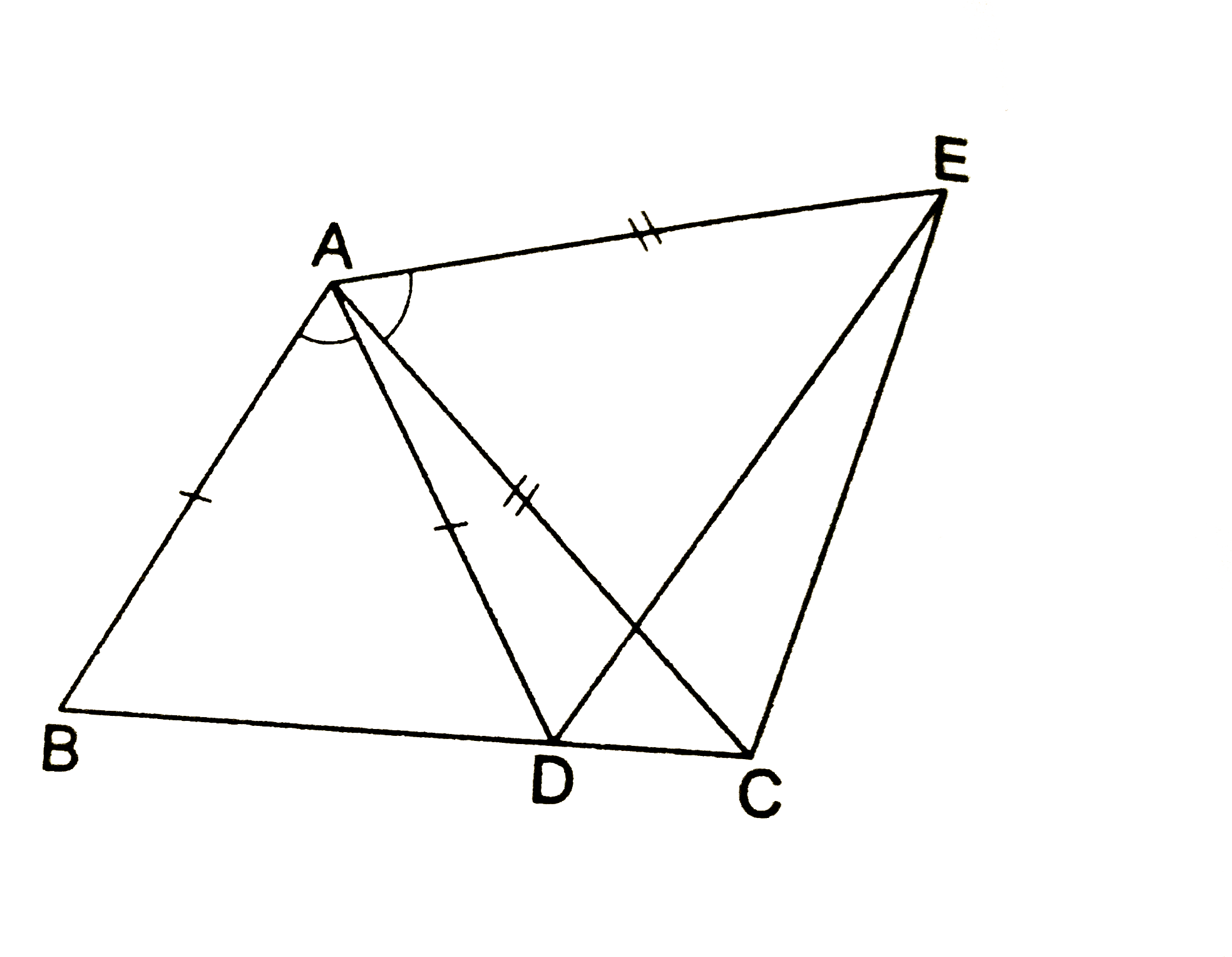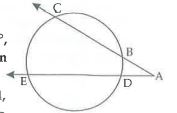in the adjoining figure, AB=AC and AD=AE. Prove that 1. ∠ADB=∠AEC 2. ΔABD≅ΔACE 3. BE=DC
Video Solution
Text Solution
∠ABE=∠ACE(Isosceles)
∠ADE=∠AED(Isosceles)
1)180−∠ADE=180−∠AED
∠ADB=∠AEC
2)In∠ABDand∠ACE
∠ABD=∠ACE
∠ADB=∠AEC
∠BAD=∠CAE
∠ABD≅∠ACE(SAS)
AB=AC
∠BAD=∠CAE
AD=AE
∠ABEand∠ACD
AB=AC
AE=AD
∠BAE=∠CAD
∠ABE≅∠ACD(SAS)
BE=CD
∠BAD+∠DAE=∠CAE+∠DAE
∠BAD=∠CAE.
|
Similar Questions
In the given figure, AB = AC and ∠B=∠C.
Then ΔABD≅ΔACE by

View SolutionIn the given figure, AB=AD in ΔABDandAC=AE in ΔACEand∠BAD=∠EAC. Show that BC=DE.

View SolutionΔABC की भुजाओं AB और AC पर बाहर की ओर क्रमशः समबाहु ΔABD और समबाहु ΔACE बनाये गये है। सिद्ध कीजिए कि :
(i) ∠DAC=∠EAB (ii) DC=BE
View SolutionIn the given figure AB=AC And AD=AE is. Prove that DEFG is a cyclic quadrilateral.
View SolutionIn the adjoining figure, If AB=3.6, AC=9.0, AD=5.4, then find AE.

View SolutionIn the given figure AB=AC and AD=AE. Prove that (i) ΔABD≅ΔACE and (ii) BE=DC

View SolutionIn the adjoining figure, BD = DC and AE = ED. Prove that
area of ΔACE=14 area of ΔABC

View SolutionIn the given figure, AB = AC and AD = AE. Prove that:
ΔABD≅ΔACE

View Solution
